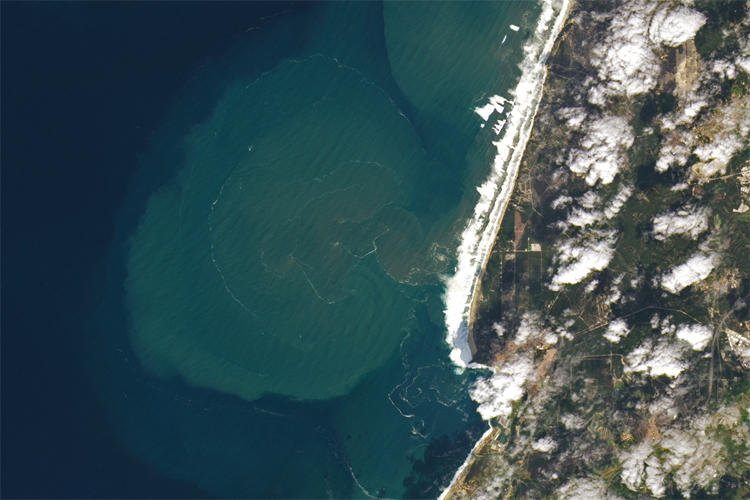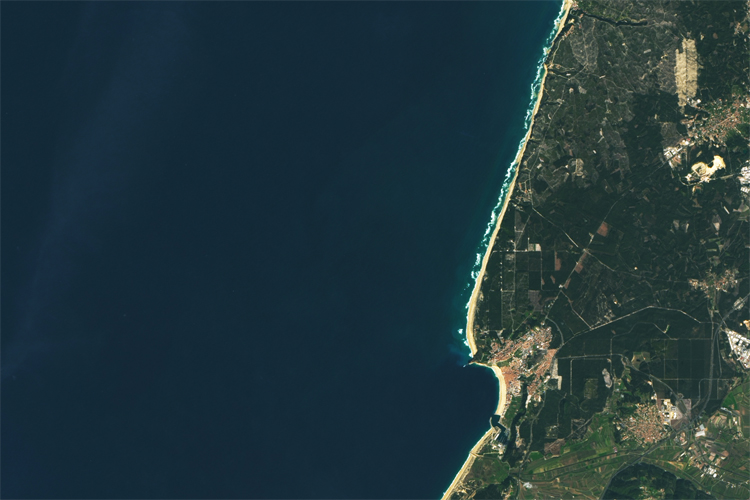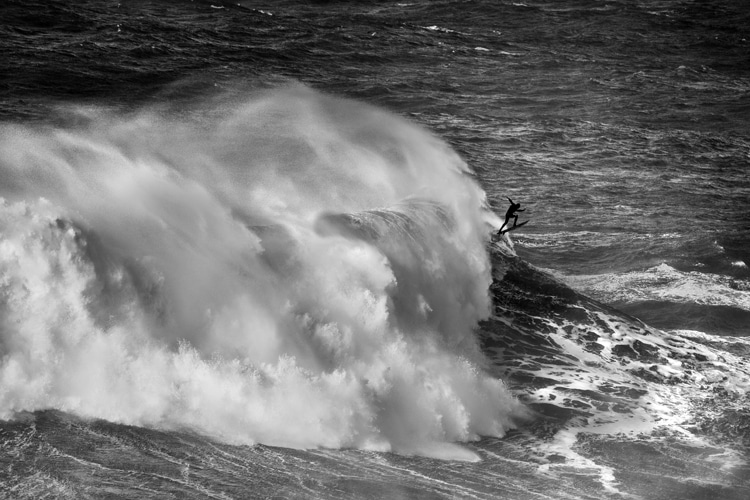Riding giant waves takes more than just bravery and excellent surfing skills - the weather and the layout of the ocean floor also play crucial roles.
That is why Nazaré, Portugal, has become a popular spot for surfers seeking massive waves.
The break provides the perfect conditions, producing some of the biggest waves ever ridden.
During the winter, the waves at Praia do Norte in Nazaré usually reach heights of around 50 feet (15.2 meters).
However, they can occasionally surge up to 80 feet (24.3 meters) or more.
One of these extraordinary days was October 29, 2020 (pictured below), when the Guinness World Record (GWR) for the largest wave ever ridden was broken.
After verification, it was confirmed that the stunt reached 86 feet (26.21 meters) and beat the previous record of 80 feet (24.38 meters), also achieved at Nazaré in 2017.


Suspended Sediment
A satellite photo taken by Landsat 8's Operational Land Imager (OLI) on that remarkable day in October 2020 clearly shows the immense energy in the massive waves.
The same location, captured in another image from February 2022 (pictured above), looks much calmer, as it would on an ordinary winter day.
So, what are the noticeable differences between the two winter days?
José da Silva, a marine scientist at the University of Porto, Portugal, told NASA's Earth Observatory that the white lines parallel to the shore are foam created by crashing waves.
This foam can be seen in both images but is much more prominent in the October 2020 picture.
Further from the shore, thin threads of foam trace across the sea's surface, created when two currents clash.
The water gets pushed down, but the foam rises and collects along the edges.
You might also notice a green circle stretching about six miles (9.6 kilometers) out from the coast.
Da Silva believes this is caused by ocean floor sediments stirred up by the waves.
Recent studies by the Portuguese oceanographer and his team found that these green areas appear more frequently with large waves rather than after heavy rain (which washes sediment into the sea).
Data reveals that on that extraordinary day in October 2020, the height of the waves far from shore was over 20 feet (six meters), with a period of about 17 seconds.
This measurement doesn't even include the height gained as the waves moved closer to shore, where they'd be even bigger for the surfers to ride.
For comparison, on a normal winter day like February 5, 2022, the waves were just over six feet (1.8 meters) high with a period of 11 seconds.
Reports suggest that the unusually large and energetic waves in October 2020 were fueled by the leftovers of Hurricane Epsilon and a low-pressure weather system near Greenland.
A Pattern Fuelled by the Underwater Canyon
Waves can travel great distances, driven by such far-off storms. But storm systems alone don't explain Nazaré's consistently large waves.
The ocean floor beneath the waves features a deep canyon that stretches 130 miles and ends at Nazaré Bay.
The part of the wave traveling over this underwater canyon moves faster than the part in shallower water.
This speed difference makes the wave bend and approach Praia do Norte from the west or southwest.
These waves eventually collide with waves coming from the northwest, which have not passed over the canyon.
This meeting of giant waves often results in the monster waves Nazaré is known for.
Nazaré's colossal waves attract visitors from all around the world, who come to watch surfing competitions or simply to marvel at the ocean's power.
But before surfer Garrett McNamara made Nazaré famous for big-wave surfing in 2011, the residents of this old fishing town had long coexisted with these impressive waves.
These moving giants have sometimes brought sorrow, taking the lives of fishermen, but also joy, providing an amazing playground for local bodyboarders, the pioneers of big-wave riding in Praia do Norte.
